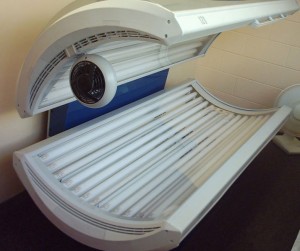 An economic downturn and 10 percent tax hastily added to the 2010 healthcare reform law combined to end 38 tanning Connecticut businesses in two years, according to an industry group.
An economic downturn and 10 percent tax hastily added to the 2010 healthcare reform law combined to end 38 tanning Connecticut businesses in two years, according to an industry group.
John Overstreet, executive director of the Indoor Tanning Association, said Connecticut had 200 tanning businesses at the beginning of 2009 and that number fell to 162 by 2011, a 19 percent drop.
“My guess is it’s even worse now,” Overstreet said.
In contrast, 15 percent of tanning businesses nationwide have closed.
He said these numbers don’t include businesses that provide tanning services, but have other primary business such as spas and nail salons.
The tax went into effect in July 2010.
The ITA estimates 1,000 employees work for tanning businesses in Connecticut, serving about 235,000 customers.
Connecticut also has another connection to the tanning business in Light Sources, a company based in Orange.
Light Sources manufactures specialty lamps, including ones that supply the tanning industry. The company has 330 employees in Connecticut.
Karl Platzer, an executive vice president at Light Sources and ITA board member, said the market for tanning lamps has shrunk, but with the exit of some manufacturers his company hasn’t been hurt – yet.
Platzer said he expects business to be down 5 percent next year.
“Hitting this negative 5 percent number would be a great result, most likely it will be a bigger minus number,” he said.
Overstreet said the government can’t add a 10 percent price increase for tanning without changing how much consumers spend on tanning services.
“If you could, people would be raising prices by 10 percent regularly,” he said.
The Internal Revenue Service hired 81 agents to collect the tanning tax.
Overstreet said gyms that include tanning in membership packages do not have to collect the tax because the IRS found it too complicated.
He said tanning businesses also sell packages that make collecting the tax challenging because only the actual UV tanning service are taxed, not spray tans, lotions or tanning oil.
He said the IRS only collects a few excise taxes like the tanning tax, including one on air travel.
While there are only a few airlines, and all of them have sophisticated computers, Overstreet said, there are 18,000 small tanning businesses, plus thousands of more businesses that offer tanning services.
“My guess is there are some businesses out there that don’t know” about the tax, Overstreet said.
The Patient Protection and Affordable Care Act, also known as Obamacare, included a 10 percent tax on ultraviolet tanning services.
Lobbyists for doctors and plastic surgeons supported the tanning tax as a replacement for a 5 percent tax on voluntary cosmetic surgery.
The 5 percent “Bo-tax” was in the House version of the bill, but the Senate switched it for the tanning tax.
Overstreet called the tax a “classic Washington mess” with special interests at the center of writing tax policy.
According to Congressional estimates, the tanning tax was expected to raise $2.7 billion over 10 years, or $270 million a year.
Tax collections are lagging behind expectations, according to the Minnesota Freedom Foundation.
Overstreet said the ITA doesn’t even know how much tanning is sold each year.
To generate the amount of taxes predicted in the Congressional estimates, consumers would need to spend about $2.7 billion on tanning each year.
“I think the industry wishes it sold $2.7 billion in tanning services,” Overstreet said.
